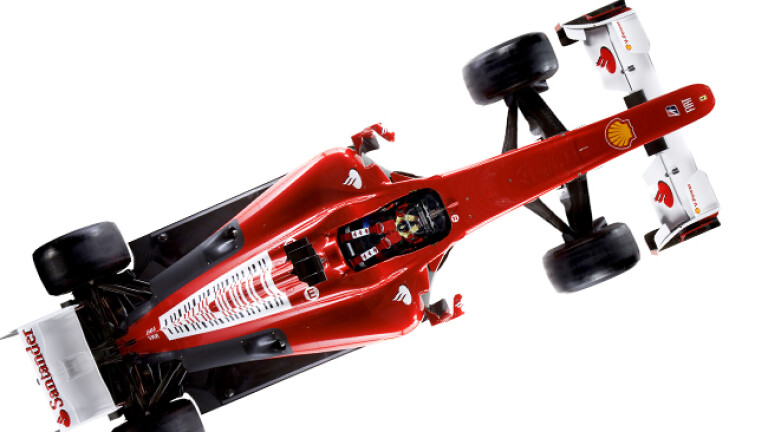
Now F1’s worth watching again, here’s Wheels’ guide to the 61st grand prix season. Best crack a foster’s…
POINTS SYSTEM
Previously, the top eight drivers scored 10, 8, 6, 5, 4, 3, 2 and 1 point respectively. This season, however, the top 10 finishers score points. The change has been introduced as a result of the expanded grid. Under the new system, the winner scores 25 points, with 20 and 15 awarded for second and third places. The next seven finishers will score 10, 8, 6, 5, 3, 2 and 1 point respectively.
GRIDS GROW
Maximum grid size has increased from 24 to 26 cars (13 teams) and qualifying changes to accommodate the extra cars. Eight cars drop out of the first qualifying session, eight from the second and 10 cars will shoot-out for pole in the third session, which is run with low fuel.
HOT-SHOE IN
If a team substitutes one of its drivers with a driver who hasn’t raced in F1 in the two previous calendar years, one day of track testing is now allowed on an approved circuit not being used for a GP in the current season. This is to avoid a situation as in 2009, when Jaime Alguersuari made his F1 debut with Toro Rosso having only previously driven an F1 car in straight-line testing.
WEIGHTING GAME
Minimum car weight is up from 605kg to 620 – this was to aid heavier drivers who used KERS and thus had less flexibility with ballast distribution. But KERS, it seems, has been given the boot.
HUBCAPS OFF
Cars are no longer allowed to run wheel covers. The benefits are that there is one less thing to go wrong during tyre changes, and as a potential aid to overtaking by making the airflow behind cars less turbulent.
TESTING TIMES
Teams are allowed six rather than eight days of straight-line aero testing per season. They will also have the option of substituting these days for four hours of wind tunnel testing with a full-scale (rather than the normal 60 percent-scale) model.
DROP TANKS
Refuelling during the race is banned for the first time since 1993. Fuel tank size grows from around 80 litres to approximately 250, and the additional weight and changed weight distribution will bring a new focus on tyre and brake conservation. And car set-up becomes more important than ever. To accommodate the larger tank, cars run longer wheelbases and wider rear bodywork.
KERS-PLUNK
The controversial kinetic energy recovery system (KERS) has lost favour for 2010 due to poor uptake in ’09 and pressure from FIA to cut costs. KERS isn’t, however, banned in the regulations. The system works by capturing kinetic energy otherwise wasted to heat in the brakes, and storing it in a battery, supercapacitor, or flywheel. Drivers can redeploy this stored energy at a rate of 61kW as a ‘boost’ that lasts a maximum of 6sec a lap.
BIG SPENDERS
A proposed budget cap of £40m (A$70m) that would have seen teams opting to take up the cap being allowed greater technical freedom, together with unlimited testing, has been abandoned after strong resistance from teams and threats of an F1 offshoot series. However, F1 management will provide financial support to new teams. Assistance will consist of £6.25m (A$11m) along with transportation of two chassis and 10,000kg of components and equipment to each race.
WINGS 'N' THINGS
The aerodynamic regulation changes that made last year’s cars look so dramatically different to 2008’s remain in place. Introduced to decrease reliance on aero downforce and increase mechanical grip (therefore making the racing closer), changes included lower, wider front wings and higher, narrower rear wings. Bodywork remains heavily regulated, effectively banning aero add-ons. Front and rear wings are to be homologated and the number of aerodynamic updates during the season is restricted.
GRIPPING STUFF
When slick tyres returned in 2009 (after being banned since ’98) tyre size remained unchanged, which meant, in terms of contact area, the fronts gained proportionally more grip than the rears. Front tyre width is now reduced from 270mm to 245 to improve front:rear grip balance. Of the four tyre compounds available for dry races, teams are allocated only two compounds of tyre per race, with the softer compound identified by a green sidewall stripe. Two wet weather tyres are also available: intermediate (wet) and wet (extreme weather). Without the need to refuel, pitstops could be as short as four seconds.
Teams and drivers
Vodafone McLaren Mercedes
MP4-25/Mercedes
1 Jenson Button (Britain) 2 Lewis Hamilton (Britain)
Mercedes GP Petronas
mgp w01/mercedes
3 Michael Schumacher (Germany) 4 Nico Rosberg (Germany)
Red Bull Racing
RB6/Renault
5 Sebastian Vettel (Germany) 6 Mark Webber (Australia)
Scuderia Ferrari Marlboro
F10/Ferrari
7 Felipe Massa (Brazil) 8 Fernando Alonso (Spain)
AT&T Williams
FW32/Cosworth
9 Rubens Barrichello (Brazil) 10 Nico Hulkenberg (Germany)
Renault F1 Team
R30/renault
11 Robert Kubica (Poland) 12 Vitaly Petrov (Russia)
Force India F1 Team
VJM03/Mercedes
14 Adrian Sutil (Germany) 15 Vitantonio Liuzzi (Italy)
Scuderia Torro Rosso
STR5/Ferrari
16 Sebastien Buemi (Switzerland) 17 Jaime Alguersuari (Spain)
Lotus F1 Racing
TBA/Cosworth
18 Jarno Trulli (Italy) 19 Heikki Kovalainen (Finland)
Campos Meta 1
TBA/Cosworth
20 TBA 21 Bruno Senna (Brazil)
US F1 Team
Type 1/Cosworth
22 Jose Maria Lopez (Argentina) 23 TBA
Virgin Racing
VR-01/Cosworth
24 Timo Glock (Germany) 25 Lucas di Grassi (Brazil)
BMW Sauber F1 Team
C29/Ferrari
26 Pedro de la Rosa (Spain) 27 Kamui Kobayashi (Japan)

COMMENTS